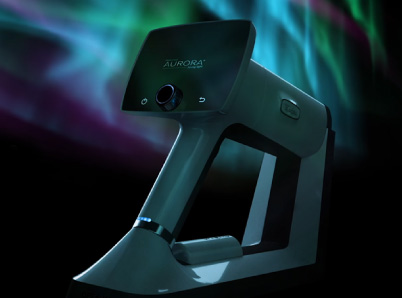Ophthalmologists provide specialized care for the eyes, but the primary care physician (PCP) commonly serves as the first line of defense against eye disease. Unfortunately, the process for providing regular screenings for early detection as a routine part of care is more challenging than it needs to be. Early screenings require direct ophthalmoscopes, a legacy medical device invented in the 1850s. While the direct ophthalmoscope revolutionized eye and medical care when first introduced, it may no longer be the most effective tool, given current trends in patient care.
The problem is that the direct ophthalmoscope has limitations that make it ill-suited for family physicians to spot signs of diabetic retinopathy, age-related macular degeneration and glaucoma, and other conditions. These diseases develop slowly over time, causing small changes in the retina that are usually only discovered when it’s too late—with the onset of severe vision impairment or blindness. Many eye diseases are treatable if caught early. But due to the challenges in using the direct ophthalmoscope, early detection screenings do not happen as often as they should.
Change is coming. New mobile fundus cameras are affordable and efficient alternatives to the direct ophthalmoscope. These cameras are more easily deployed in primary care settings and offer significant advantages in ease of use, portability, workflow, and diagnostic support. Putting more of these cameras into the hands of doctors on the front lines will increase the frequency of early eye disease screenings, saving patients from the effects of devastating retinal disease.
Advantages and Limitations of Direct Ophthalmoscopes
Direct ophthalmoscopes changed healthcare by allowing doctors to closely examine the retina for signs of eye disease or conditions such as hypertension and cancer. The device produces highly magnified views of the retina, enabling the doctor to spot signs of trouble in the form of small, hard-to-see changes.
But the direct ophthalmoscope only provides a narrow field of view. As a result, screenings require great physician skill and patience, as well as good bedside manner for what becomes an up-close-and-personal exam.
The biggest problem for general physicians is that the direct ophthalmoscope requires patients to have their pupils dilated to provide the most effective views. It takes up to a half hour for dilating drops to take effect before the physicians can conduct the screening, which can cause interruptions in the regular flow of patients on a normal day.
These limitations have some people in the industry questioning the future of ophthalmoscopy for use in general practice.
How Mobile Fundus Cameras Are Empowering PCPs
The urgency to expand early detection has led to the development and distribution of new mobile fundus cameras. These are essentially digital camera systems specially designed to capture and deliver high-resolution images of the retina, both still and video.
General practice physicians can use these cameras to help detect signs of retinal disease as a component of regular exams. Early detection allows for prompt referrals to specialists for more detailed follow-up and evaluation.
Digital retinal cameras have several advantages over direct ophthalmoscopes. First, they are non-mydriatic, meaning they can capture images without the patients’ pupils being dilated. Mobile fundus cameras are also lightweight and portable. Doctors can carry the device with them to scan patients in different exam rooms, as well as during visits at home or in remote clinics.
Essentially, mobile fundus cameras are part of a system that leverages advances in artificial intelligence (AI) to pinpoint areas of the retina that require further physician or specialist review. Because the images are captured in digital form, they can be integrated with AI technology across health care networks.
The technological frontier of mobile fundus cameras is expanding. Retinal imaging is now also available via connected smartphones, further expanding the availability of early screenings.
See What Optomed Can Do
The data shows that 80% of vision problems connected to disease are treatable or preventable. That’s why Optomed has committed itself to providing cutting-edge mobile retinal imaging systems for deployment to PCPs, clinics, and other health care environments in support of access to sight-saving early eye screenings.
The company’s latest offering is the Optomed Aurora, a system that produces higher-quality images and improved ease-of-use, leveraging AI integration for quicker analyses for review. These new features will lower the barriers for physicians to offer eye screenings, as it fits cleanly into the workflow by speeding up screenings and reducing costs.
The Optomed Aurora offers seamless connectivity to hospital and doctor networks. Once captured, images can be shared with specialists who are remote, as well as attached to electronic health records for future comparisons.
Sight-Saving Technology
The direct ophthalmoscope is one of the most impactful medical devices ever developed, and specialists will continue to use it. But the increasing complexity and pace of the modern family practice require new approaches to detecting eye disease. Mobile fundus imaging is a cost-effective, easily deployable alternative that gives PCPs a greater role in preventing needless vision loss.
Here at Optomed, our mission is to help save the vision of millions of people. By integrating our software and artificial intelligence solutions with our camera, we enable eye screening for everyone, wherever they are. To see how we can equip you to save the sight of more patients, schedule a free consultation today!
